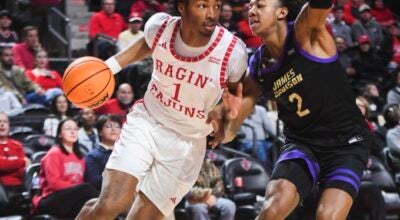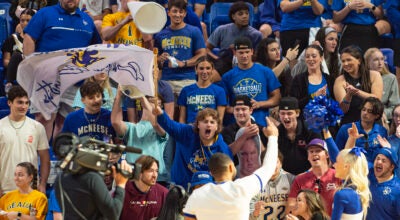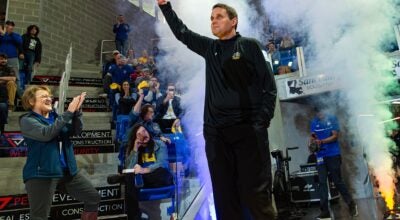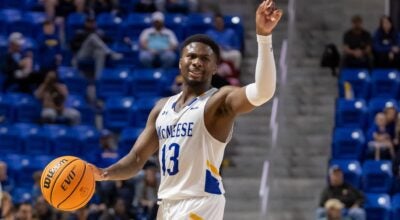Recruiting process a grind for McNeese
Published 8:55 am Tuesday, August 26, 2014
Every college football player has a story, not just all of them are that exciting.
For every four-star national sensation like Barbe grad Trey Quinn, now a freshman at LSU, there are hundreds of other players who go way under the radar.
Some of them still sign at the big power schools, but make little splash. They are considered small fish in big ponds.
But there are still more who grind out a nice career on lower levels, like at McNeese State.
For those players the journey through a college career are less hyped and less documented.
Yet each one of them work just as hard for their moments in the spotlight. They are the big fish in a small pond.
For the Cowboys, there is one man who is at the center of trying to cast the right bait to catch the perfect fish for McNeese’s pond.
He is Tim Leger, who serves as McNeese’s recruiting coordinator among other duties.
It is up to him to find the diamonds in the rough and make them sparkle on the Football Championship Subdivision.
“Things are a little harder on this level because kids are always looking at playing at the top colleges,” Leger said. “That means we have to wait and see what some of the other offers are for kids when they come out of high school.
“There is always a chance that we can work hard to get a kid and at the last minute one of the big schools like an LSU come in and grab them up. It happens so we have to be prepared when it does.”
That doesn’t mean the Cowboys pass on star prospects. They go after the big names just as much as the bigger schools.
“For us the process of recruiting is the same as any other school,” Leger said. “We have to evaluate the talent, make sure they can qualify with our academic standards and look at what each player can bring to us while filling the needs of our positions.”
And not always does that mean McNeese gets its man on first crack.
The Cowboys have a total of six players on this year’s roster who transferred from BCS programs last fall, two of them from the Southeastern Conference.
“When we talk to players and they end up going on to bigger programs, we make sure they know that if their circumstances change and they are looking for another school, and we have availability at their position, that they can come talk to us and see if there is a fit,” Leger said.
So losing a player for a year doesn’t always mean the Cowboys have lost them forever.
“This is where it is important for us to know our place in the hierarchy of college football,” he added. “We have to understand that kids are going to want to be a part of the big teams and play in front of the bigger crowds. But we also know that doesn’t always work out for the best so we have to keep working all the time to make sure we do what is right for the students.”
One of the best stories on this was two years ago when LSU kicked Tyrann Mathieu, aka the Honey Badger, off the team. Mathieu showed up on the McNeese campus looking for a place to play and instead of signing him up, head coach Matt Viator made the All-American safety take the weekend to think about it.
Mathieu decided against playing for McNeese.
“Each situation is different and you have to take that into consideration,” Leger said. “You have to get kids here who want to play and want to be at the school. It has to be right for all parties.”
McNeese coaches also have to be able to project what players might become. By not getting the top athletes often times the Cowboys sign late bloomers, players that grow into different positions and become better athletes.
Tight end Zach Hetrick was a linebacker in high school but is now playing offense at McNeese.
“No question you have to do more projecting here,” Leger said. “Players seem more willing to change at this level also.”
The job seems to get harder every year as the big schools try to lock up players at an earlier age more than ever before. Sometimes that can work out for McNeese as the bigger programs often have filled their position numbers before a kid has a big senior season in high school.
That happened with redshirt freshman receiver Kent Shelby out of New Orleans. By the time he grew into his 6-foot, 3-inch, 211-pound frame there were few spaces on the bigger level from him to land.
For this and the projections to work, McNeese has to rely on a good working relationship with high school coaches.
“We don’t have the recruiting budget of the big schools so we need help from coaches to not only find some players but give us insight into what kind of kids they are and how they can help us,” Leger said. “It also has to be a team effort with the coaching staff to make sure we are filling what we need as well.”
It’s a process that starts long before the first game and nobody knows how it works out until four or five years pass.
However, recruiting is the lifeblood of a good team and can make or break a season four years down the road.
l
Jim Gazzolo is managing sports editor. Email him at jgazzolo@americanpress.com





